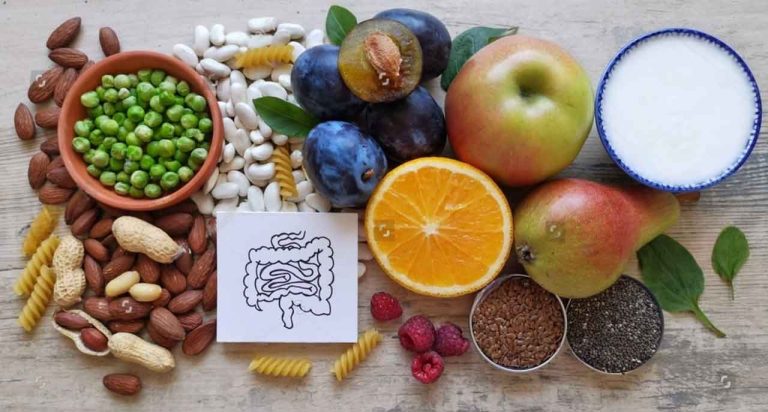Millets- a wonder grain
Have you ever been advised to change the grains you eat or you are planning to change the grains due to any reason including gluten sensitivity or need of a low GI grain then the answer lies in Millets.
Millets are the tiny powerhouses that have been gaining popularity in recent years for their numerous health benefits.
They help improve digestion and fight inflammation among many other benefits.
Different types of millet
There are a variety of millets with different colors, textures, and flavors. Some of the most popular types of millet include foxtail millet, proso millet, barnyard millet, pearl millet, and finger millet. Each type of millet has its own unique set of health benefits.
Foxtail Millet: Foxtail millet is rich in iron and magnesium. It helps to regulate blood sugar levels and is good for people with diabetes. It is also known as “Kangni” or “Kakum”.
Proso Millet: Proso millet is high in fiber and protein. It helps to lower cholesterol levels and is good for heart health apart from lowering blood sugar levels.
Barnyard Millet: Barnyard millet is a good source of calcium and phosphorus and fiber. It helps to build strong bones and teeth. It is also known as “Sanwa”.
Pearl Millet: Pearl millet or Bajra is rich in antioxidants and vitamins B1, B2, and B3. It also contains protein, iron, and trace minerals. It helps to boost immunity and fight off infections.
Finger Millet: Finger millet also known as “Ragi” is high in iron and calcium. It helps to prevent anemia and is good for bone health.
Kodo Millet: Rich source of Zinc, calcium, and, potassium. It also contains a good amount of magnesium. Even persons with weak digestion can also eat it comfortably. It provides good strength to nerves and contains a good amount of vitamin B. Individuals with diabetes can easily take it as it has a low GI. It is also helpful in the management of high blood pressure.
Sorghum Millet: This millet also called “Jowar” is a well-known grain in India. People in India have been using it as a substitute for wheat to make Chapatis/rotis. It contains a good amount of fiber and protein. It is good for heart health.
Little millets also known as Kutki or Sama, like other millets variety is good for overall health. It has liberal amounts of minerals and vitamin B
Amaranth also known as “Rajgira” is also good for heart health. It is a rich source of minerals and protein.
Buckwheat is a well-known millet and is also known as “Kuttu”. People in India use it during fasts. Good for cardiovascular health and helpful in diabetes.
Millets are one of the oldest grains. Depending upon storage condition, millets have a very long shelf life, Millets are easy to digest, Do not cause acidity, and are Gluten-free. For diabetic patients, it is a boon as it has low GI. Millets contain a good amount of Fiber, Vitamins, and important minerals like potassium, magnesium, zinc, phosphorus, calcium, etc. People considered that Millets were only carbs and were therefore not healthy. It was not appreciated that Millets are a complex carb and thus do not possess the disadvantages of simple carbs. Millets got their deserving honor and the year 2023 was observed as the International Year of Millets by United Nations Food and Agricultural Organization.
Millets and diabetes
Studies show that millet can help to regulate blood sugar levels, making it a great choice for those with diabetes. Their low glycemic index means that they are absorbed slower into the body, providing a slow and steady energy release. Eating millet may even help to reduce the risk of developing type 2 diabetes in those who are at risk. Millets have a much lower GI than most grains, which helps to prevent spikes in blood sugar levels.
Millets and Weight Loss
Another great benefit of millet is its ability to aid in weight loss. Millets are high in dietary fiber, which helps keep you feeling full for longer periods of time. This can help reduce your overall calorie intake and prevent overeating. Additionally, millets provide a good source of plant-based proteins, which help speed up the metabolism and burn fat more efficiently. Incorporating millet into your diet can also help you to maintain a healthy body weight and reduce the risk of obesity.
Millets vs wheat
Millets may be a healthier option than wheat. Wheat is usually heavily processed and refined, which strips away many of its nutrients. In contrast, millets are nutrient-packed and full of beneficial vitamins, minerals, and antioxidants. Plus, they are gluten-free, making them a great choice for those who need to avoid grain-based products due to allergies or sensitivities. So if you’re looking for a nutritious alternative to wheat, millets might be the perfect solution.
Millets and digestion
Millets are beneficial for digestion. Because of their high fiber content, millets can help to keep your digestive system running smoothly and reduce the risk of constipation and other gastrointestinal issues. They also contain prebiotic fibers that feed the good bacteria in your gut and help to support proper digestion. So if you’re looking for a healthy way to improve your digestive health, adding millet to your diet is definitely worth considering.
Millets for cellular health
Finally, millets are great for cellular health. They contain B vitamins and minerals like phosphorous, magnesium, and iron that are essential for optimal cell functioning. Additionally, they contain antioxidants that help to protect cells from damage caused by free radicals. Eating millet regularly can also help to reduce inflammation and improve overall health. So if you’re looking for a nutritious way to boost your cellular health, millets are definitely worth considering.
Cooking Millets
One potential downside to millets is that they contain lectins. Lectins are a type of protein found in some plants that can cause digestive issues in certain people. However, soaking and cooking millets can reduce the number of lectins, minimizing any potential negative side effects. You can cook them the same way rice are cooked. It can be paired with vegetables and lentils for more benefits.
Cardiovascular health
Millets can also help to improve cardiovascular health. Studies show that eating millet regularly can help to reduce cholesterol levels and improve overall heart health. Eating millet may also reduce the risk of stroke and other cardiovascular diseases by helping to keep blood pressure levels in check. The high fiber content of millet can also aid in weight loss and help you maintain a healthy body weight, further reducing your risk for heart problems. So if you’re looking for a nutritious way to boost your cardiovascular health, adding millet to your diet is definitely worth considering!
Conclusion
Millets are a nutritious and versatile food. Millets are rich in essential vitamins and minerals, dietary fibers, and antioxidants, making them an excellent choice for those looking to improve their health. They also have a low glycemic index which helps regulate blood sugar levels. By adding millets to your diet, you will not only enjoy the taste of these ancient grains but also reap all the wonderful health benefits that come along with them.
| Help in management of lifestyle diseases. Have great advantage over wheat and rice. |
| Take good care of gut |
| Low GI food, does not cause spike in blood sugar. |
| Gluten free grains |
| Have advantage over rice and wheat |
| Millets are fortified with minerals by nature |
| Rich source of antioxidants |
| Anti-inflammatory |













